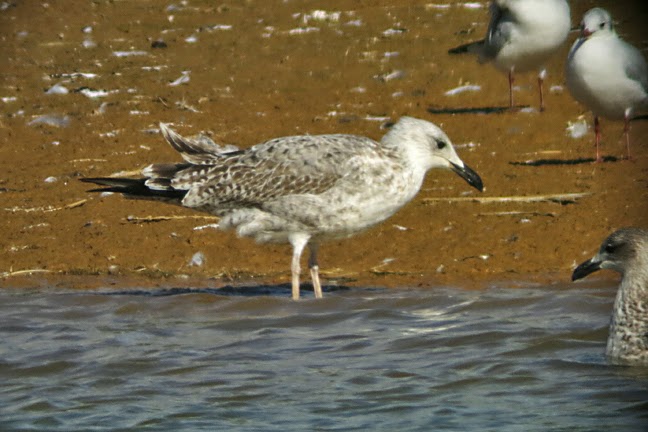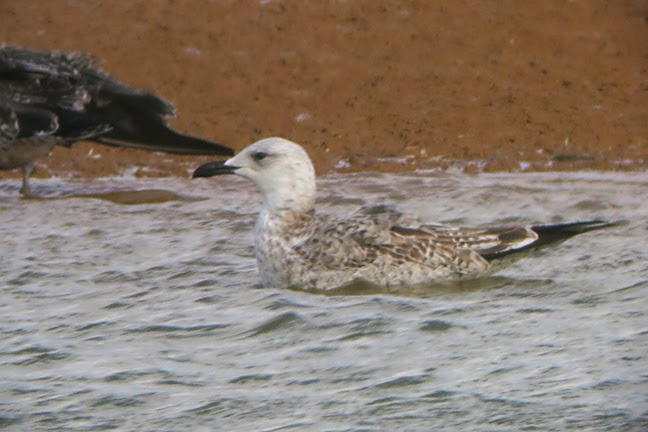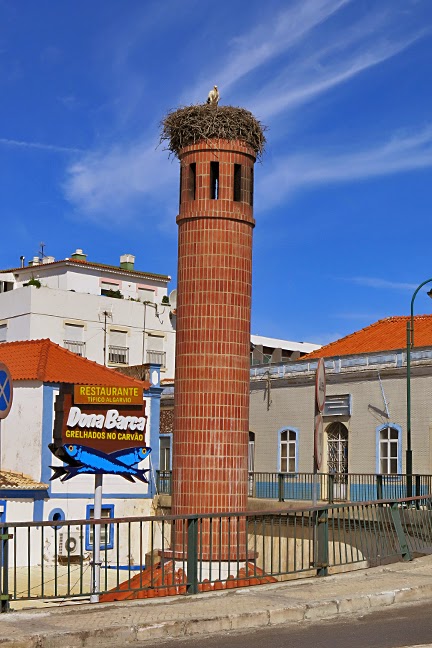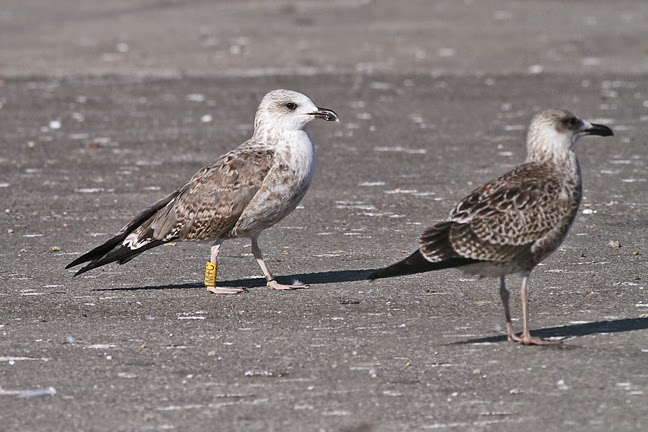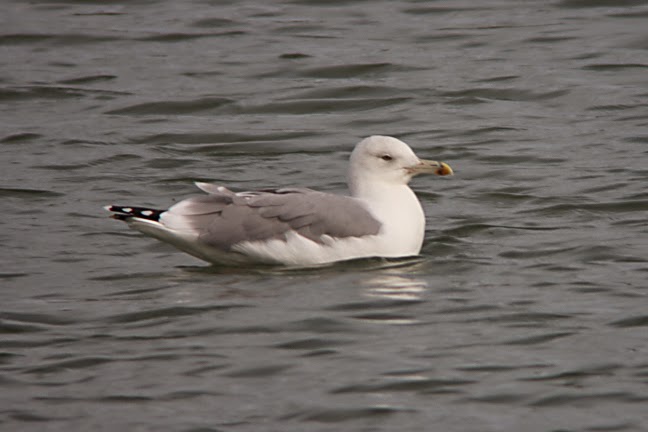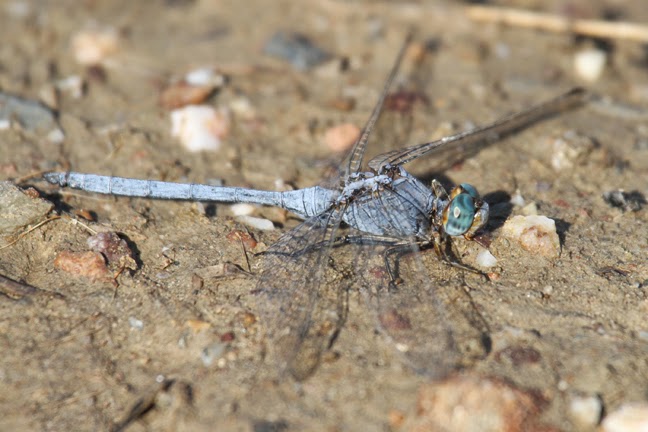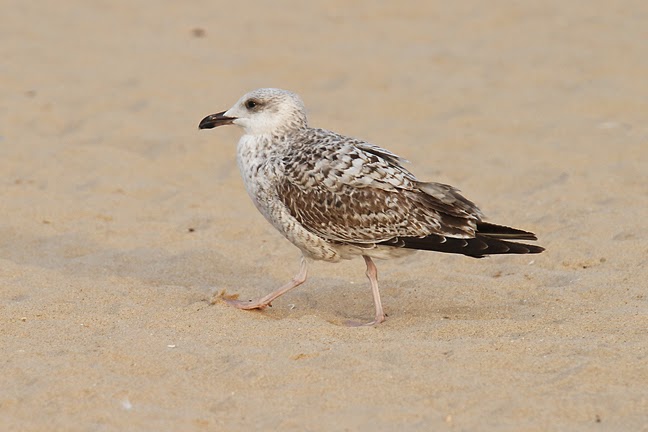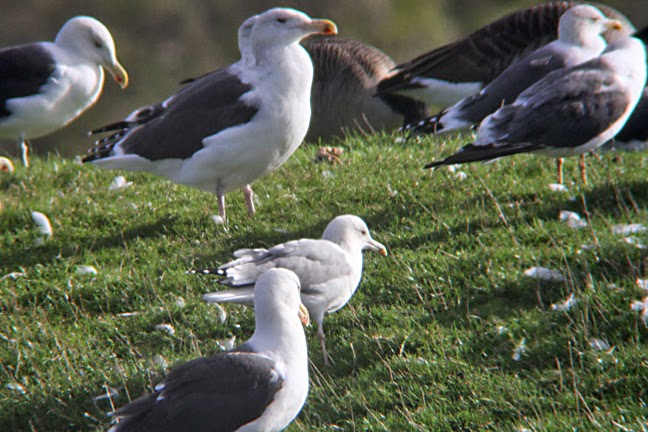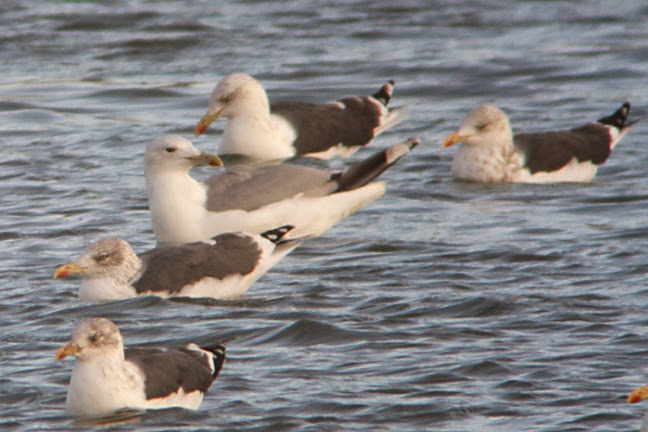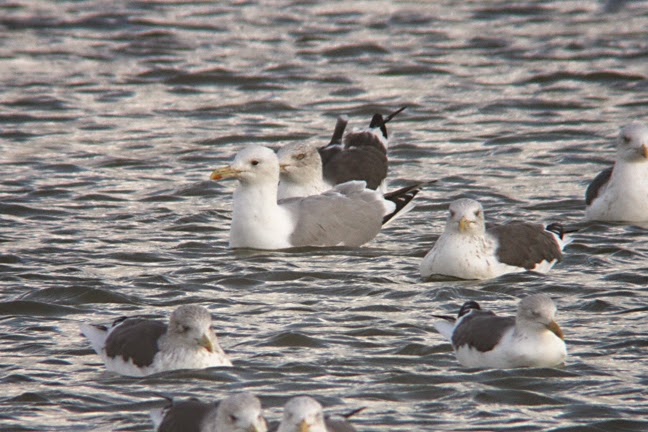Back to reality - no more wandering amongst the gulls reading colour rings with the naked eye, as I did in Portugal. It was back to extreme 'sea gulling' at Shawell A5 lagoons.
The day was going well, as I'd read quite a few colour rings including a couple from Guernsey. Most Guernsey LBB Gulls know better than to hang around in Britain during the colder months, but 7T8 and 4CK6 hadn't read the memo.
Anyway I spotted what looked like a second-winter Caspian Gull lying down on the bank between the lagoons. It spent most of its time fast asleep, but all of a sudden it jumped up and revealed a green colour ring. It must have been a 'doggy dream' as it was back down and fast asleep in seconds. It started to rain heavily, but still it lay there asleep. A commotion amongst the nearby gulls ended up with one of them falling on to my subject, which got it back on its feet very quickly!
Steve Nichols arrived at this point and helped me read the colour ring. We both agreed on D and I knew the starting letter was X, but there were two other characters to read. I fitted my camera and zoomed up to 10x. I got a quick look at the last letter, which was a J. We now had X_DJ, but what was the last letter? I thought it was a V at first, but the haze cleared for a second and I was sure it was a N. We didn't get any longer to ponder, as a Common Buzzard scared the gulls and the Caspian Gull flew towards the tip. I was not over confident, but it looked like the green colour ring had the code XNDJ. I was able to take a few seconds of video in the pouring rain and below is a screen grab from that video just for the record.![]() |
| Caspian Gull XNDJ |
This evening I sent an email to Dr Ronald Klien, as he is in the know about these East German ringed Caspians.
In the time it took me to have my Sunday night bath he had replied:
Hi Carl,
Hiddensee EA-183821 + green XNDJ
nfl. 7. June 2013 Gräbendorfer See /Brandenburg GER 51.42 N 14.06 E
No other sightings yet. Hiddensee-Centre was informed, official report will come to you from there.
Many thanks and good gulling.
I am really chuffed by this result - thanks Ronald
I was allowed to sneak back to Shawell A5 Lagoons today, as the ladies of the house were out shopping in Leicester. I hoped to get a better view of XNDJ, which was asking a lot as the nearby tip is closed on Sundays and so fewer gulls congregate in the area.
Almost as soon as I arrived I spotted what looked like an adult Caspian Gull. It was re-growing its longest primaries, so it looked short winged. It will look longer winged in a few weeks. I did get to see the new longest primary (P10) as it preened and although short the pattern was spot on for Caspian Gull. Its eyes were slightly paler than I would like, but their eyes are variable just like in other gull species. Its eyes weren't as pale as the adult Herring Gulls that were present.
![]() |
| Adult Caspian Gull (active primary moult) |
![]() |
| Adult Caspian Gull |
![]() |
| Adult Caspian Gull |
All the standard features are there to see: long parallel sided washed out bill, small head, beady eyes and a low profile as it rests on the water. Its legs were a sickly flesh colour.
I didn't get to see the lower half of its legs which was a shame, as it some what reminds me of the colour ringed adult I had in August - PADZ.












